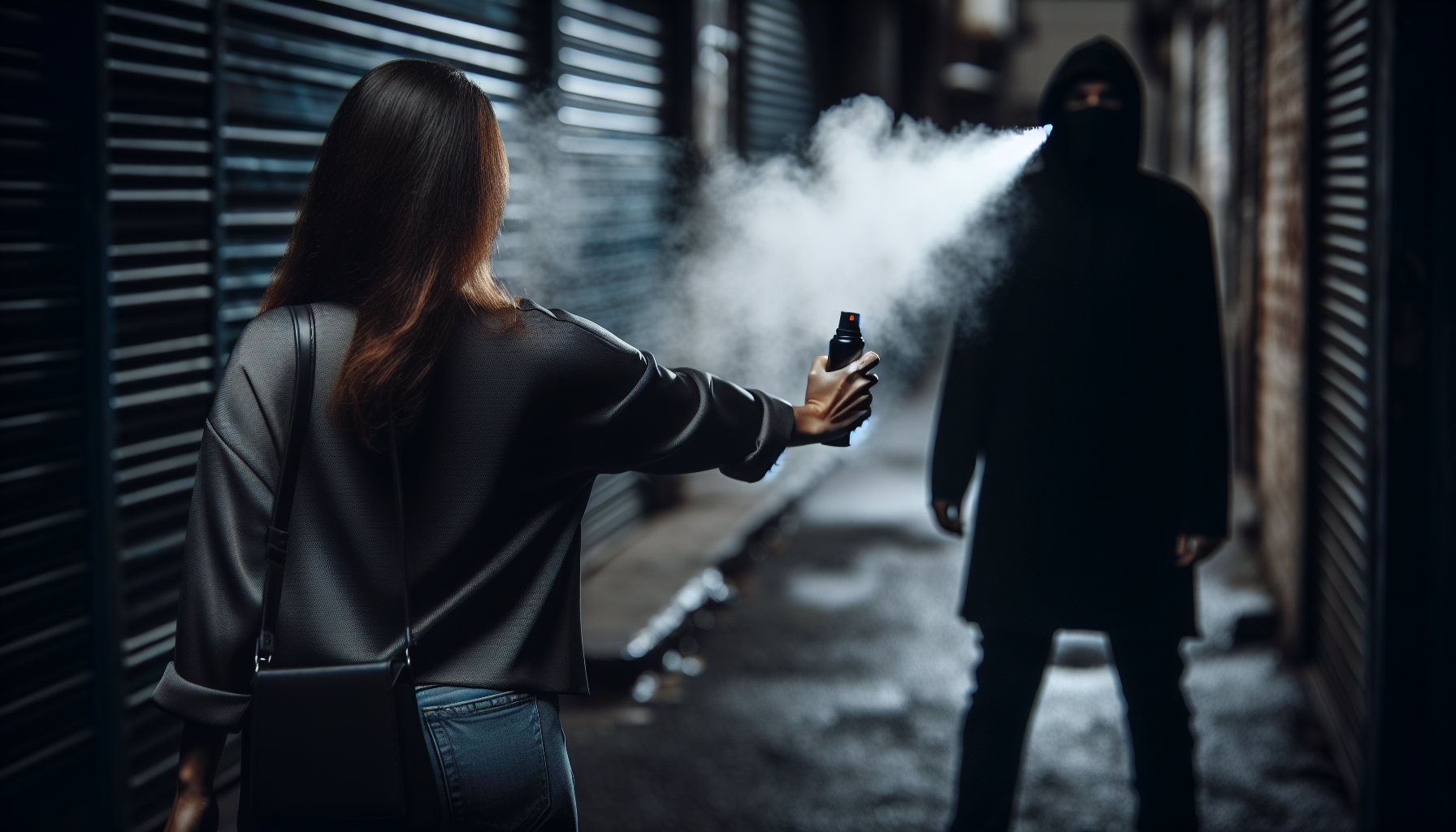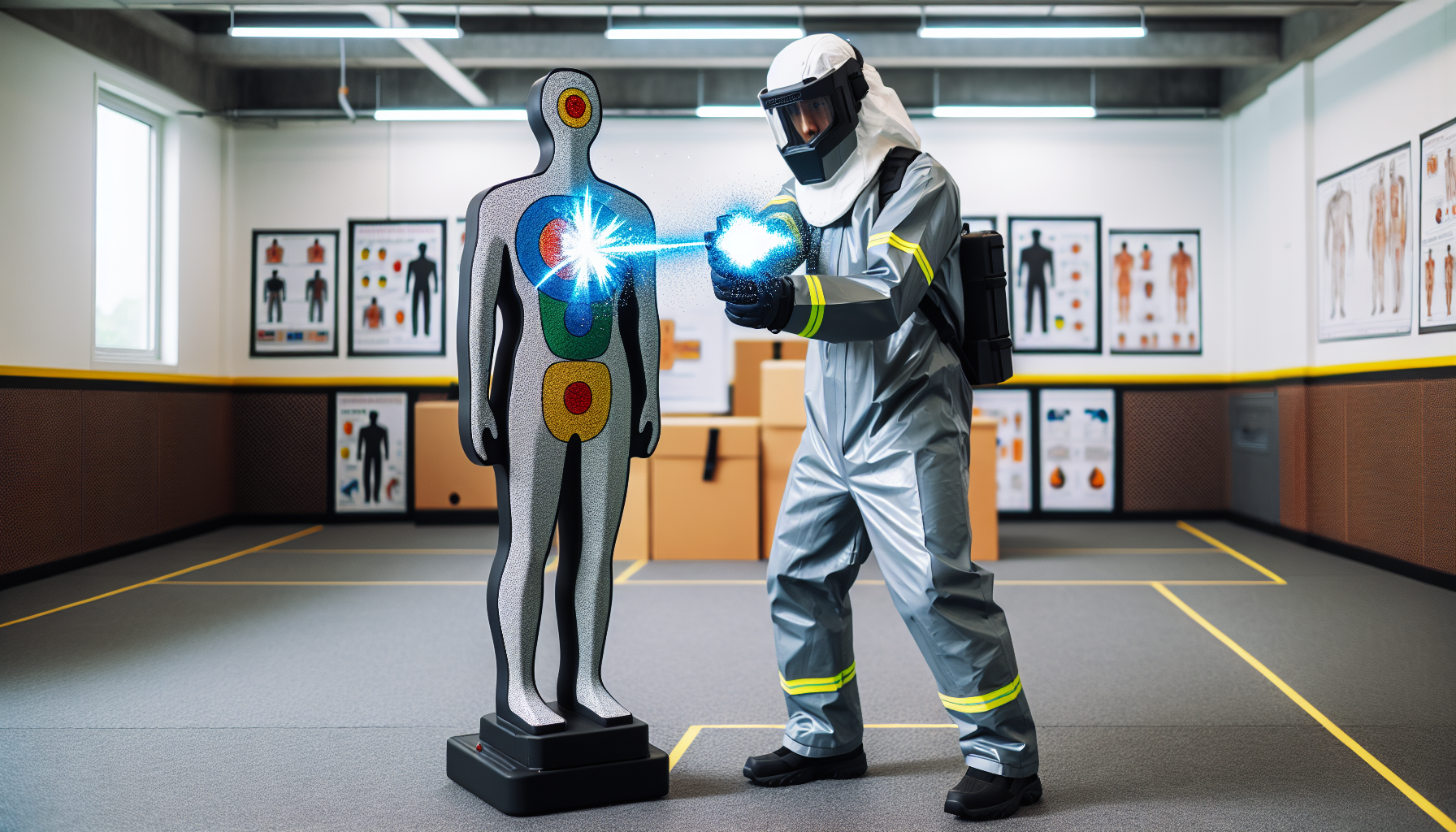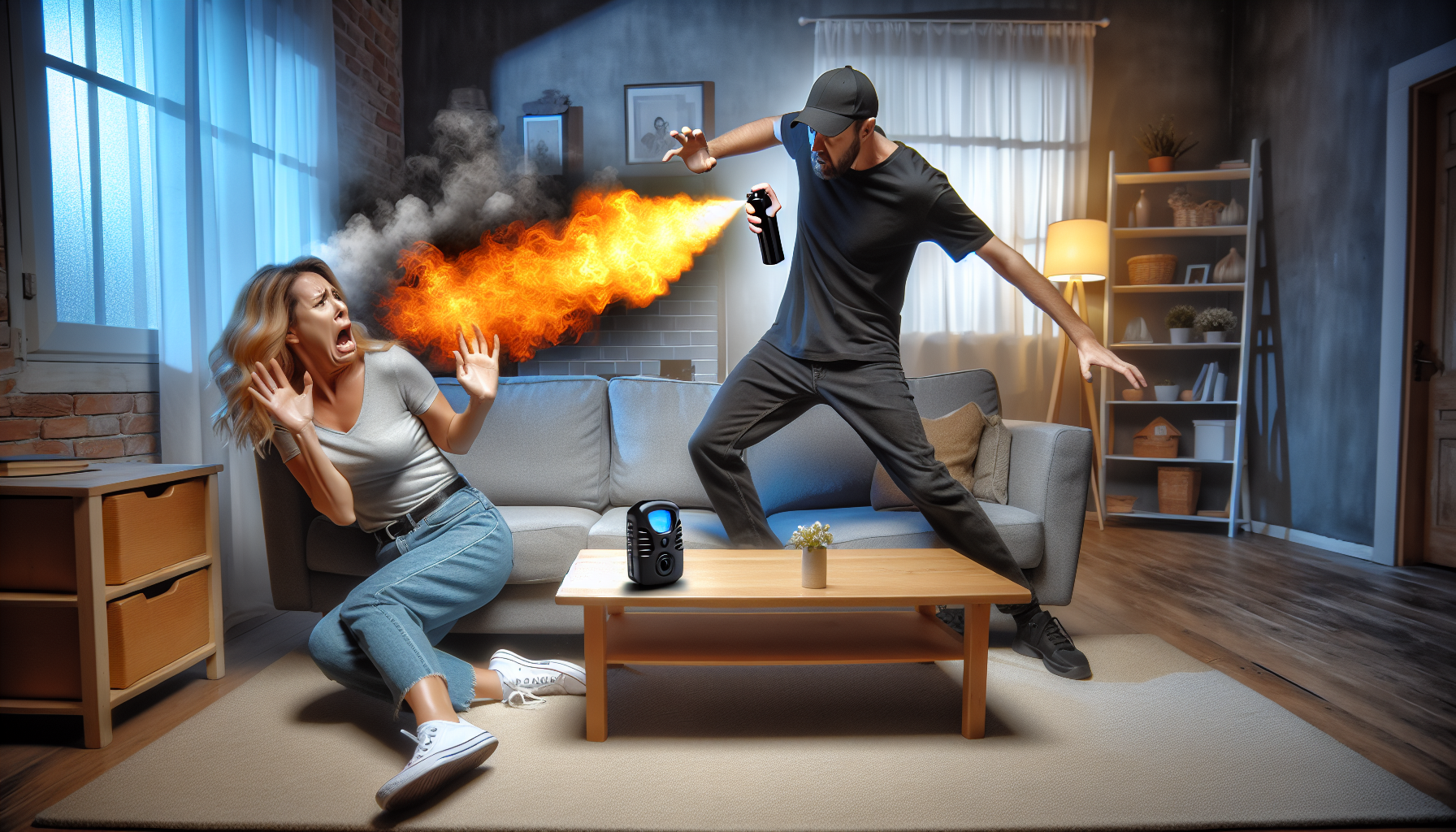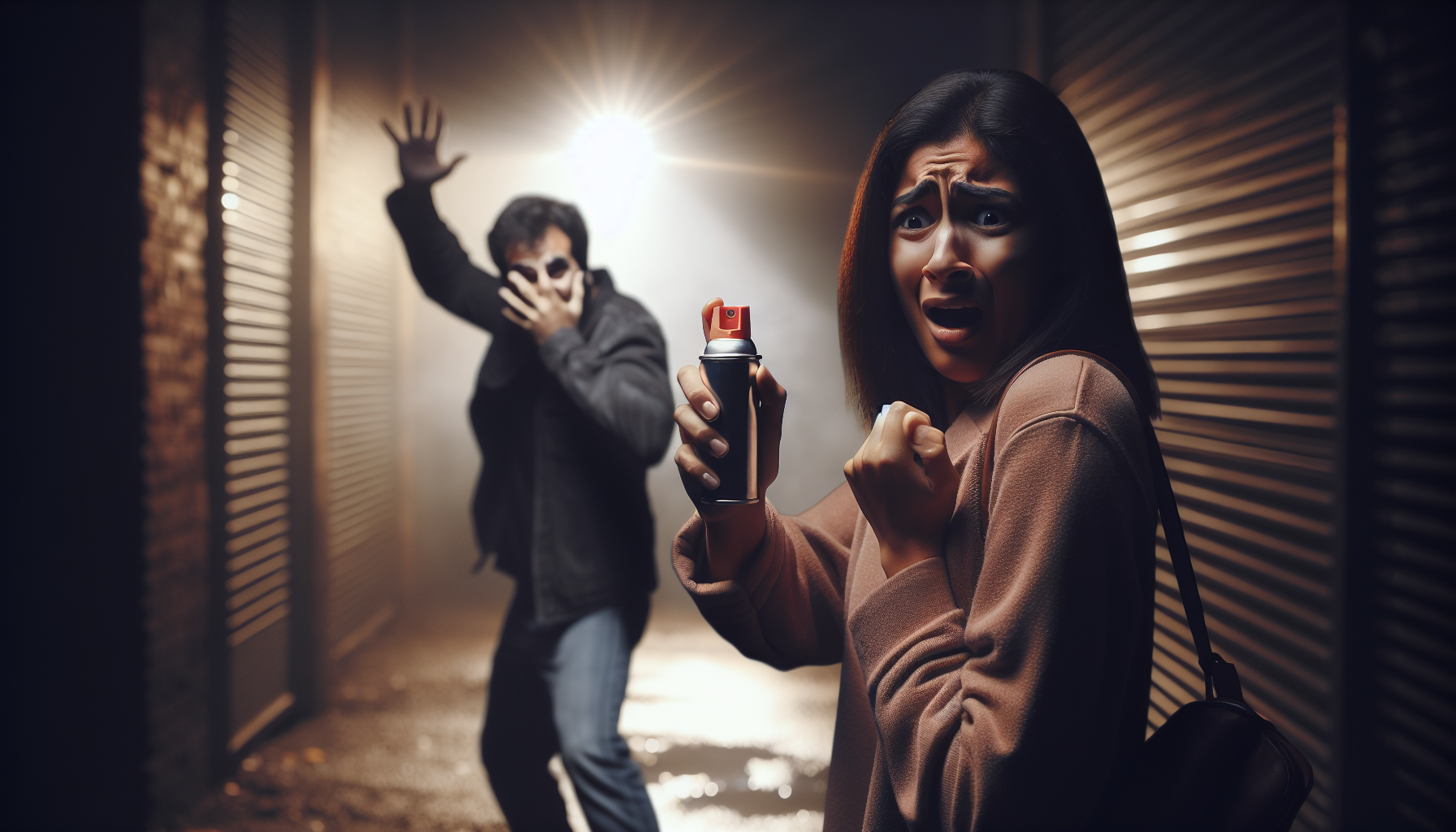In personal safety, knowing when to utilize non-lethal self-defense options can be just as crucial as knowing how to defend oneself. There are scenarios where nonlethal self-defense options may be more effective than firearms due to legal implications, ethical considerations, or the need to minimize harm in uncertain situations. From deescalating encounters with the mentally ill to navigating crowded public venues, this article explores the practicality and responsibilities of choosing less-than-lethal means over deadly force. Dive into an analysis of various scenarios where the strategic use of non-lethal self-defense, from pepper spray to stun guns, to personal alarms, can make all the difference for your safety and conscience.
Key Takeaways
- Non-lethal self-defense options like pepper spray, stun guns, and personal alarms provide a means to incapacitate an attacker without causing a fatality, and their effectiveness varies based on the situation and the user’s familiarity with the device.
- Appropriate non-lethal weapon use can be crucial in scenarios like dealing with mentally ill individuals, navigating home invasions, and ensuring safety in public spaces, where the risk of injuring bystanders or using excessive force with lethal weapons is higher.
- Effective use of non-lethal self-defense tools requires adequate training and preparedness, with various training programs and resources available to educate individuals on usage, legal implications, and developing personal safety plans.
Understanding Non-Lethal Self Defense Options

Non-lethal self-defense options, also known as less-than-lethal weapons, aim to incapacitate an attacker without causing fatality. They serve as an effective protection method, eliminating the need for deadly force. Some of the most commonly used nonlethal weapons, such as non-lethal device options, include pepper spray, stun guns, and personal alarms, each with its own unique mechanism of action.
Pepper Spray
Pepper spray, a common item used for self-defense, operates by inducing immediate and potent effects upon contact with an attacker’s eyes. It causes intense irritation to the eyes, skin, and lungs, resulting in temporary disablement, making it a less-than-lethal self-defense option. Although not as severe as chemical weapons like tear gas, the active ingredients in pepper spray include:
- capsaicin
- o-chlorobenzylidenemalononitrile (CS)
- chloroacetophenone (CN)
- oleoresin capsicum (OC)
While pepper spray is effective, comprehending the legal stipulations in your locality before its use is of utmost importance. It’s generally permissible for self-defense use in most states, but there could be potential restrictions on its size, concentration, and purchase in certain states and localities. The recommended guidelines for utilizing pepper spray for self-defense involve directing it at the assailant’s face at close range, deploying it with your dominant hand, and practicing its use.
Stun Guns

Stun guns function as an electrical self-defense tool, administering a high-voltage shock to an assailant, resulting in temporary incapacitation. They are powered by standard 9-volt batteries and are a popular non-lethal alternative to a lethal weapon. There are many different types of stun guns. Some key features of stun guns include:
- High voltage shock
- Temporary incapacitation
- Powered by 9-volt batteries
- Non-lethal alternative
Stun guns may induce physiological effects such as:
- Superficial burns
- Minor puncture wounds
- Temporary pain
- Cognitive disorientation
- Muscle spasms, potentially causing falls or fractures
There’s also a potential for cardiac issues. However, the immobilizing impact of a stun gun can endure for several minutes, offering a window for evasion or restraint, making it a less-than-lethal force option.
Click here for stun gun laws.
Personal Alarms
Personal alarms function by emitting a loud, attention-grabbing sound that can startle and disorient potential attackers, allowing the user to escape or seek assistance. These devices are considered less than lethal weapons for self-defense.
There are various types of personal alarms available, including basic alarms designed to emit a loud noise to notify individuals in the vicinity, alarms that transmit an alert to a family member’s pager or phone, and both monitored and non-monitored personal alarms. Personal alarms can be effective in a range of scenarios, such as home invasion, public spaces, and crowded areas. However, their effectiveness is influenced by the specific circumstances and the availability of bystanders who can offer support.
Situations Favoring Non-Lethal Solutions
Whereas lethal force may be necessary in certain circumstances, numerous situations prove more suitable for non-lethal self-defense options. These include dealing with mentally ill individuals, handling home invasions, and navigating public spaces or crowded areas.
Comprehending the appropriate timing and method for using non-lethal force can notably strengthen personal safety, avoiding the need for deadly force.
Dealing with Mentally Ill Individuals
Non-lethal self-defense options are particularly beneficial when interacting with mentally ill individuals. They offer greater ease of learning and usage in comparison to firearms and result in less permanent harm, making them appropriate for a broader spectrum of threats where lethal force might be deemed excessive. Some examples of non-lethal self-defense options include:
- Pepper spray
- Stun guns
- Tasers
- Personal alarms
- Self-defense keychains
These options allow individuals to protect themselves without causing serious injury or harm.
Nevertheless, sufficient training in using specific non-lethal defense tools, understanding their limitations, and complying with legal regulations is of utmost importance. Approaching the situation with empathy, patience, and understanding and striving to de-escalate the circumstances when feasible is also critical.
Home Invasion Scenarios

Non-lethal self-defense options like pepper spray can incapacitate or discourage an intruder without resulting in fatal harm, providing more adaptability in addressing the particular circumstances of a home invasion.
Commonly effective non-lethal self-defense options in home invasion scenarios include:
- Pepper spray
- Pepper irritant projectile/guns
- Tasers
- Stun guns
- Self-defense batons
- Less-lethal shotguns
If you find yourself in a situation where you have to use pepper spray during a home invasion, it is recommended to direct it at the assailant’s face from close range in the form of a stream, spray, or mist.
Public Spaces and Crowded Areas

In public spaces and crowded areas, the strategic use of non-lethal self-defense options such as pepper spray or personal alarms can help mitigate unintended harm and minimize the risk of injuring innocent bystanders, while still offering a method for self-protection.
However, employing lethal self-defense techniques in public spaces and crowded areas can lead to panic and chaos, heightening the potential for harm to innocent bystanders. Moreover, it poses a threat to public health and safety by promoting the use of violence and vigilante justice.
Training and Preparedness
Adequate training and readiness are key for the effective utilization of non-lethal self-defense options. Whether it’s learning how to use a pepper spray, understanding the legal implications of using a stun gun, or knowing when to activate a personal alarm, training can significantly enhance your personal safety.
Developing a Personal Safety Plan
A comprehensive personal safety plan includes:
- Strategies and support systems to be utilized when recognizing warning signs of a crisis
- Coping strategies
- Sources of support
- Customized strategies tailored to individual requirements
Identifying potential threats in a daily routine involves being mindful of one’s surroundings, relying on intuition, and being able to discern indicators of peril. The most suitable self-defense tool should align with your psychological capabilities in a high-pressure scenario.
Real-Life Examples of Non-Lethal Self Defense Successes
Having explored the fundamentals of non-lethal self-defense options and their uses, we now focus on real-life instances that demonstrate their efficacy in various scenarios.
Pepper Spray Incidents

Pepper spray has proven its efficacy in numerous self-defense incidents, such as muggings, by effectively terminating attacks without necessitating physical engagement. Annie Cushing recounted an incident where pepper spray thwarted an attack on her and her daughters, and a woman in Jackson County, Oregon effectively used pepper spray to halt a potential intruder.
The effects of pepper spray can typically last from 20 to 30 minutes, with potential durations of up to 2 hours in certain cases. This gives the victim a window of opportunity to escape and seek help.
Stun Gun Success Stories
Stun guns and TASER energy weapons have been effectively utilized in self-defense scenarios, with TASERs being deployed over 5 million times in real-life situations, demonstrating a significant success rate. Research has showcased the efficacy of TASER energy weapons, indicating a success rate of 99.75% in 1,201 field cases and highlighting their reliability in inducing temporary neuromuscular incapacitation.
In addition, stun guns have demonstrated their effectiveness in real-life situations by inducing intense pain and complete loss of muscle control to immobilize attackers, while minimizing the risk of inflicting permanent harm.
Summary
In conclusion, non-lethal self-defense options offer a viable and ethical alternative to lethal force. They provide an effective means of self-defense that can incapacitate an attacker without causing death, making them suitable for various scenarios.
It’s important to remember that training and preparedness are key when using non-lethal self-defense options. Whether you choose to carry pepper spray, a stun gun, or a personal alarm, being well-versed in their use can significantly enhance your personal safety.
Frequently Asked Questions
In what situations would a less-than-lethal weapon be used?
A less-than-lethal weapon would be used in situations of civil disturbance to disperse riots, incapacitate individual rioters, or in hostage rescue or other police operations. It provides a safer alternative to lethal force.
What is the most effective non-lethal self-defense weapon?
A pepper spray or a tactical flashlight is the most effective non-lethal self-defense weapon. Both are easily accessible, highly effective and can help you protect yourself in dangerous situations.
What are the advantages of less-than-lethal weapons?
Less-than-lethal weapons are advantageous because they help limit the escalation of conflict and are used in situations where employing lethal force is prohibited or undesirable. They also adhere to rules of engagement requiring minimum casualties.
What is an example of a less-lethal use of force?
Pepper spray is a commonly used less-lethal method for crowd control, causing temporary pain and incapacitation but generally harmless afterward. Rubber bullets, tear gas, and electric-shock weapons like Tasers are other examples of less-lethal force.
How does pepper spray work in self-defense situations?
Pepper spray has immediate and potent effects upon contact with an attacker’s eyes, leading to severe irritation and temporary disablement. It also irritates the eyes, skin, and lungs, making it an effective self-defense tool.


